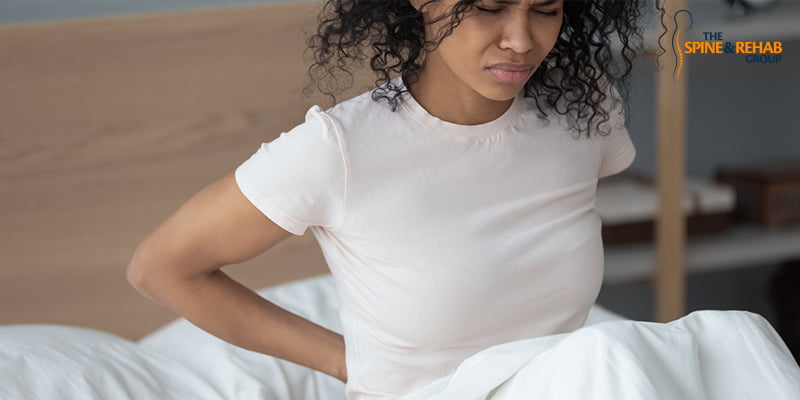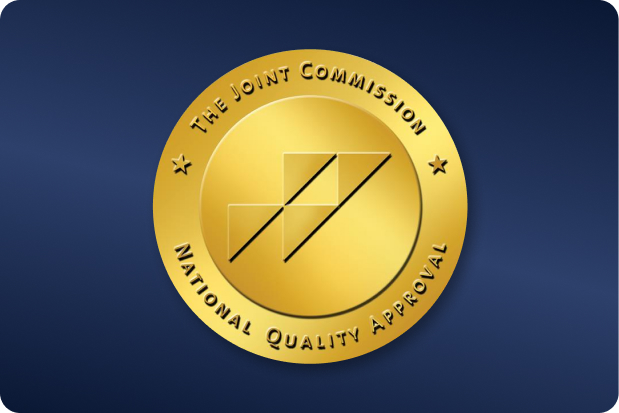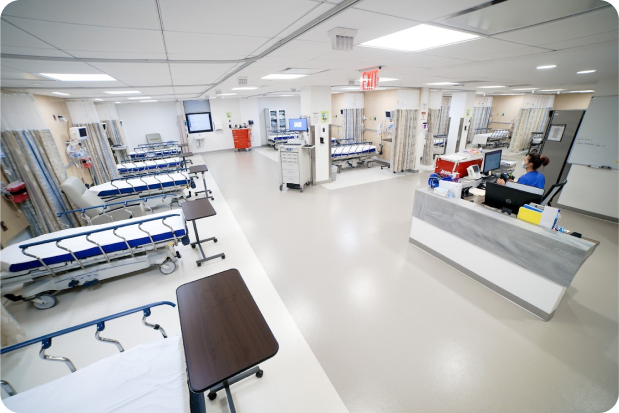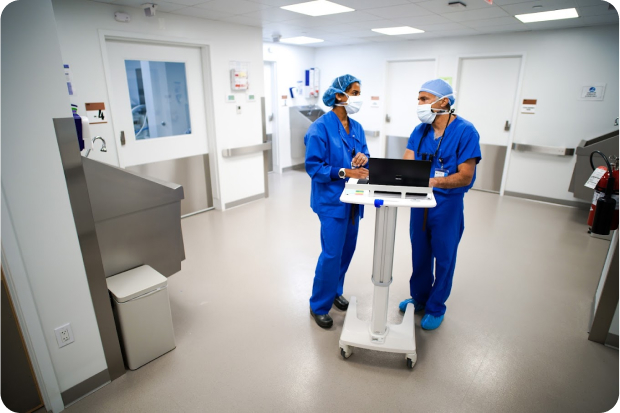 OUR LOCATIONS
Call to book 201.523.9590
OUR LOCATIONS
Call to book 201.523.9590
 OUR LOCATIONS
Call to book 201.523.9590
OUR LOCATIONS
Call to book 201.523.9590

Sleeping is supposed to serve as rest after a long and tiring day at work. But for many adults, waking up in the morning has become a chore. Not just because of the amount of work or chores during the day, but because of persistent low back pain. A 2014 study even identified lower back pain as the top cause of disability around the world. This may be caused by poor sleep hygiene, improper posture, or muscle trauma.
So what can you do to minimize lower back pain after sleeping? You can look into lifestyle modifications to help you improve your symptoms in the long run. Exercises such as morning yoga and stretches can strengthen your back and minimize pain. There are also supplements for calcium and vitamin D that can increase your strength.
Most cases of lower back pain aren’t caused by underlying medical conditions. While some conditions like gallstones, sciatica, and arthritis can lead to pain, an overwhelming number of cases are caused by poor sleeping positions. These are further exacerbated by adults who have bad posture during the day.
Fixing your sleeping position can go a long way to minimize your lower back pain. This can start from adding more pillows to sleeping on your side. You can also look into modifying your bedroom setup to accommodate your condition.
Most people default to sleeping on their back. Many specialists argue that this is the most “proper” sleeping position, since it promotes proper spine alignment. A pillow underneath the head and knees can reinforce correct sleeping posture.
But if this feels uncomfortable, you can lay on your side. Start by laying on your right or left shoulder, allowing your entire body to be in contact with the bed. To ensure proper posture, place a pillow between the knees. You can also place a small pillow to close any gaps between your waist and the bed.
However, it’s important that you change positions every now and then. Sleeping on the same side all the time can lead to scoliosis or muscle imbalance. The pillow is the crucial part of this sleeping position, since it keeps the body in proper alignment.
Adults suffering from a herniated disc may also benefit from sleeping on the side—but staying in a fetal position adds cushion to the vertebrae in the spine. Since herniated discs are pushed out of their normal position, the curling position helps relieve tension in the nerves and relax the vertebrae.
For some people, sleeping on the stomach can be effective. But it’s important to place a pillow under the groin or lower stomach to keep pressure off the back. This position is most effective for patients experiencing degenerative disc disease.
Besides sleeping positions, your pillows and mattress can also cause morning back pain. Your pillow should provide support for your head and neck. It can also help cushion the upper spine. When lying on your back, your pillow should serve as a filler between your neck and the mattress. If you’re a side sleeper, you’ll need a thick and firm pillow to maintain a proper sleeping posture.
Make sure to avoid using a large pillow that reaches underneath your shoulders. This puts the back out of alignment and will lead to back pain in the morning. Some people may also benefit from having thinner and smaller pillows to pad the neck. Popular examples include memory foam and water pillows.
If you sleep on your stomach, your pillow should be as thin as possible. This helps take away pressure from the back while ensuring that you’re comfortable. But if you feel comfortable without a pillow, you can opt to remove it completely to maintain proper body alignment.
Whatever pillow you choose, it’s important to replace it regularly. Change your pillowcase weekly to avoid skin issues. Over time, pillows can deteriorate and lose their firmness. Change pillows every 2 to 3 years to ensure that your head gets adequate support.
Besides the pillow, you should also have a mattress that fits your needs. While orthopedic mattresses are very firm, these may not be the right fit for you. Some people get poorer sleep if their mattresses are too thick. At the same time, a mattress that’s too soft will lead to long-term back issues.
A medium-firm mattress is often the best choice for most people. Make sure that it’s made out of high quality materials, especially the innerspring and foam. These are important parts of the mattress that can affect the durability of the bed. If you don’t have the resources to replace your current mattress, you can make your old one firmer by adding a wooden board under it.
Besides the pillows and mattress, it’s also important to stick to a proper sleep schedule. Make sure to get 6 to 8 hours of sleep each night. If you’re having trouble sleeping, try to lie down at least 30 to 60 minutes before your target bedtime. A relaxing activity can help prepare your mind for sleep. It also helps to switch off electronic devices early to prevent staying up for longer periods.

Lower back pain after sleeping is the result of long-term habits. While you can replace your pillows and mattress as you can, these will be useless if you don’t feel relief. Besides sleeping in more comfortable positions, you can also make a few changes to your lifestyle to encourage healing and pain relief.
Morning yoga is used by many to kick start their day. But besides waking you up and preparing you for the day ahead, you’ll also experience relief in the back muscles and joints. Some yoga positions, such as the cat-cow, sphinx, and extended triangle all work the back muscles. These can help relieve stress and stretch out your muscles.
There are also other stretches that you can use to get rid of lower back pain. Some helpful ones include the pelvic bridge and knees-to-chest stretch. These ease tension and help the back regain its strength. You can also look into stretches you can do in the bed, such as the spinal twist and full body stretch.
Core workouts can also help your lower back muscles ease up. You can easily incorporate these into your daily or weekly exercise regimen. Some common exercises include the glute bridge and the forearm plank. Make sure to observe proper posture and form to prevent injury. If you have a fitness instructor, you can also ask them for advice on modifying your routines for back pain relief.
Many vitamins and minerals are associated with muscle strength. Calcium and vitamin D are especially helpful for those suffering from lower back pain due to their role in cell repair and growth. Vitamin D is known for its role in maintaining back health, particularly in lessening spasms. On the other hand, calcium can strengthen your bones and prevent osteoporosis.
Other helpful nutrients include vitamin C, magnesium, and zinc. You can ask your doctor about using multivitamin supplements to replenish your body’s supply. It’s important to get your doctor’s approval first to avoid any harsh reactions to some nutrients.
Adopting a multi-disciplinary approach can be helpful for patients who suffer from chronic lower back pain. Non-surgical treatments, such as steroid injections, massage therapy, and acupuncture can help make recovery faster. These treatments are administered by licensed and experienced doctors at The Spine and Rehab Group, an award-winning healthcare provider based in New York and New Jersey.
Interventional spine and pain injections help decrease inflammation and pain sensitivity. Specifically, epidural steroid injections help with restoring mobility and function in the back.
Patients may need multiple injections for maximum relief. Besides injections, your therapist may also prescribe radiofrequency treatments for the lumbar region.
Medical massages are often part of physical therapy treatments, but therapists can also use them to treat localized pain. The massage therapist will target key areas that are causing pain and tension in the lower back.
Rooted in Chinese traditional medicine, acupuncture aims to release endorphins into the body through the insertion of needles that measure 0.5 to 2.5 inches. Your acupuncturist may use a reflexology map to reach all possible trigger points associated with lumbar pain. The procedure is generally painless.
If your doctor suspects other injuries, they may recommend electrodiagnostic medicine. An example of this is electromyography (EMG), which checks on muscles and nerves associated with acute pain. The EMG can help locate the cause of unexplained pain, particularly if there’s a pinched nerve.
Physical therapy is a common solution prescribed for patients with chronic pain issues. This is a combination of patient education sessions, manual therapy, and exercises. Your therapist will work with you to formulate a treatment plan targeting the muscles of the lower back.
You’re already on the right track if you’re looking for a lower back pain doctor near me. The Spine and Rehab Group serves the New Jersey and New York areas with a wide range of pain relief treatments. Our team of licensed therapists and doctors is equipped with the knowledge to administer acupuncture, physical therapy, electrodiagnostic medicine, and more. For more information, feel free to visit our pain treatment clinic or give us a call at 201-523-9590.



